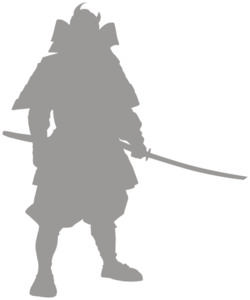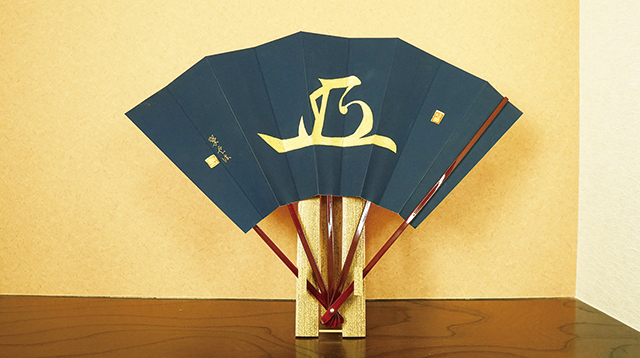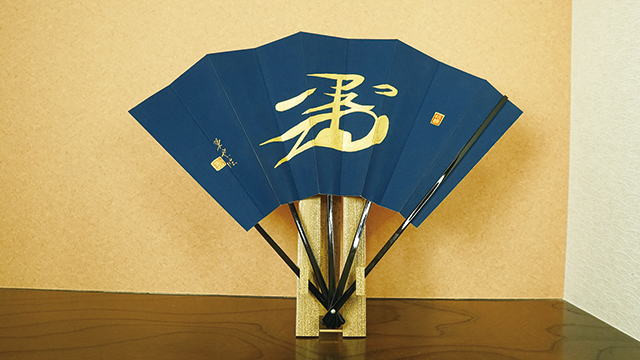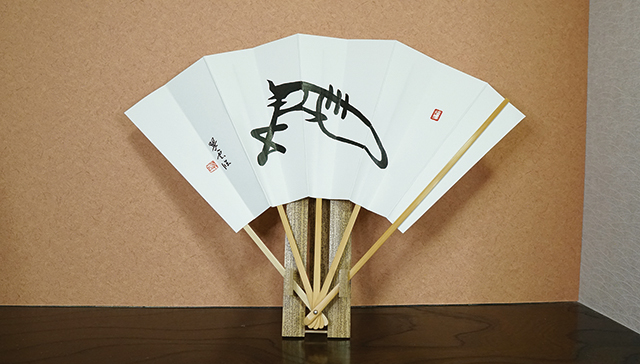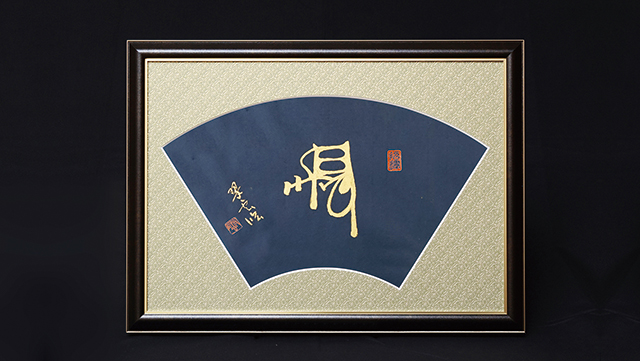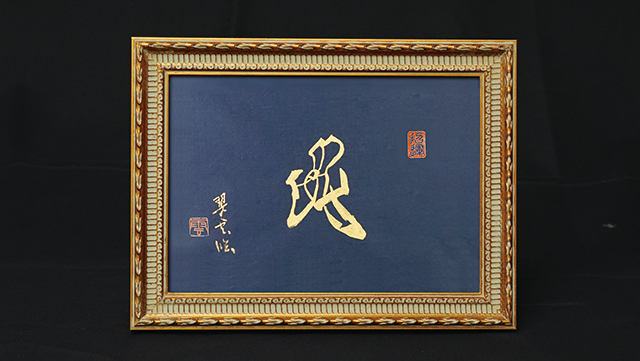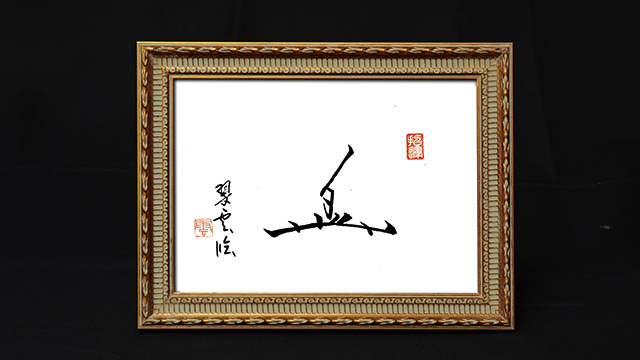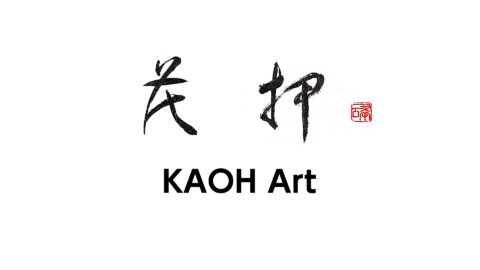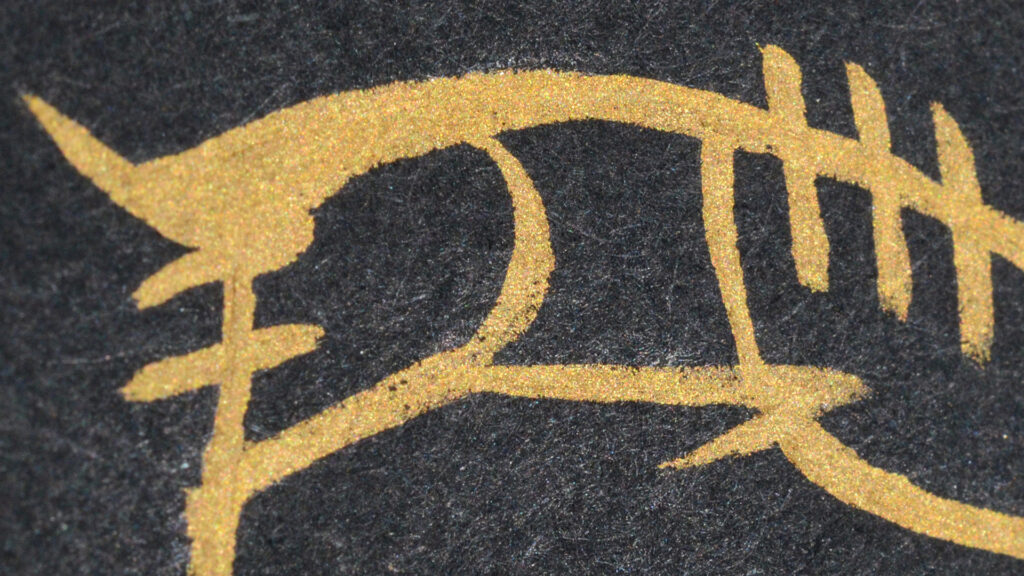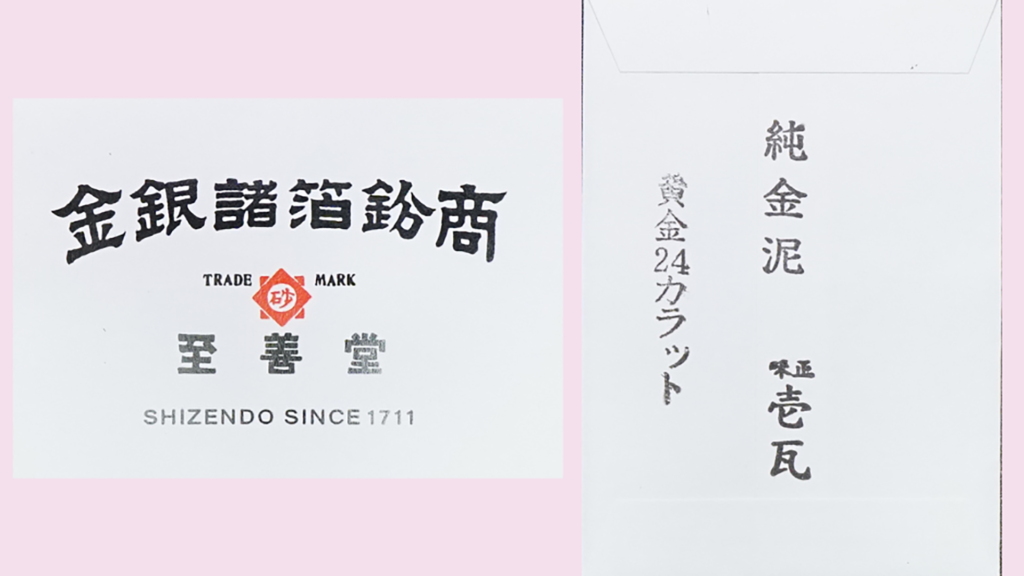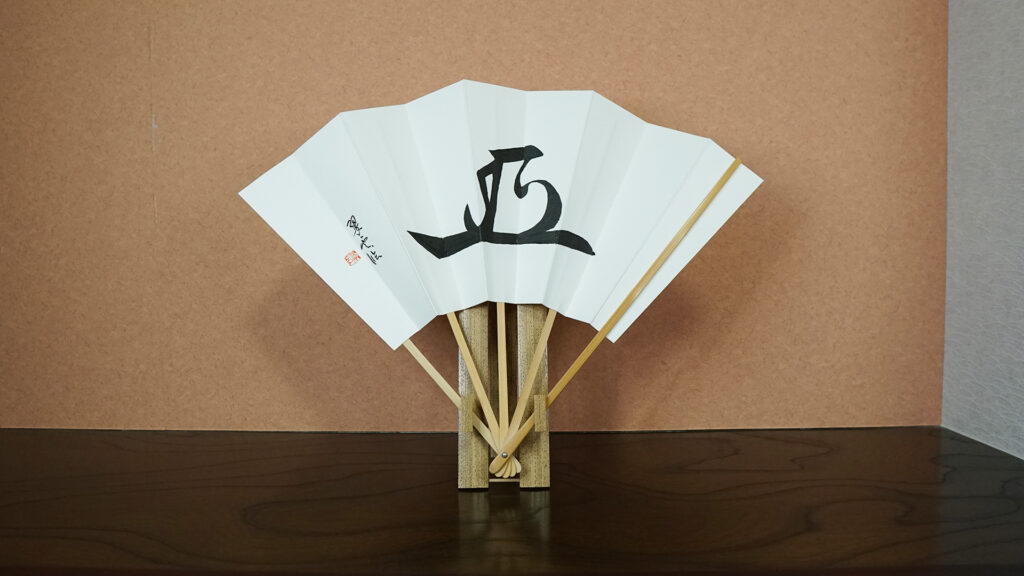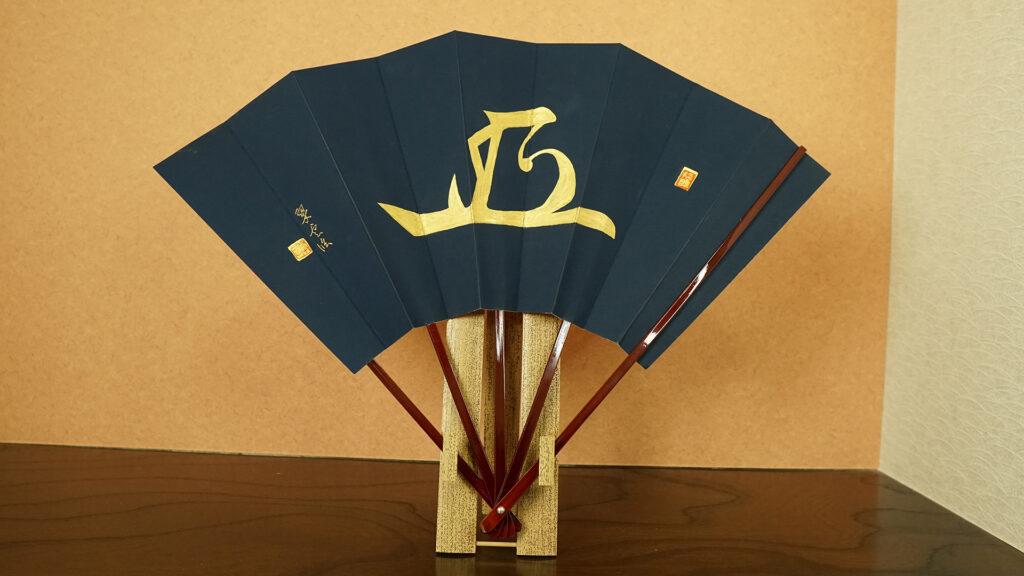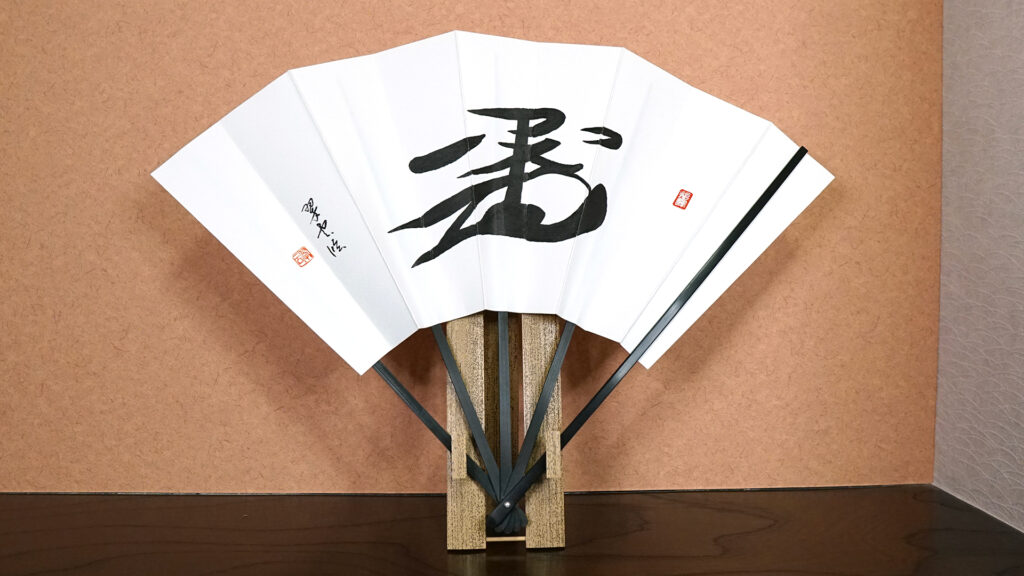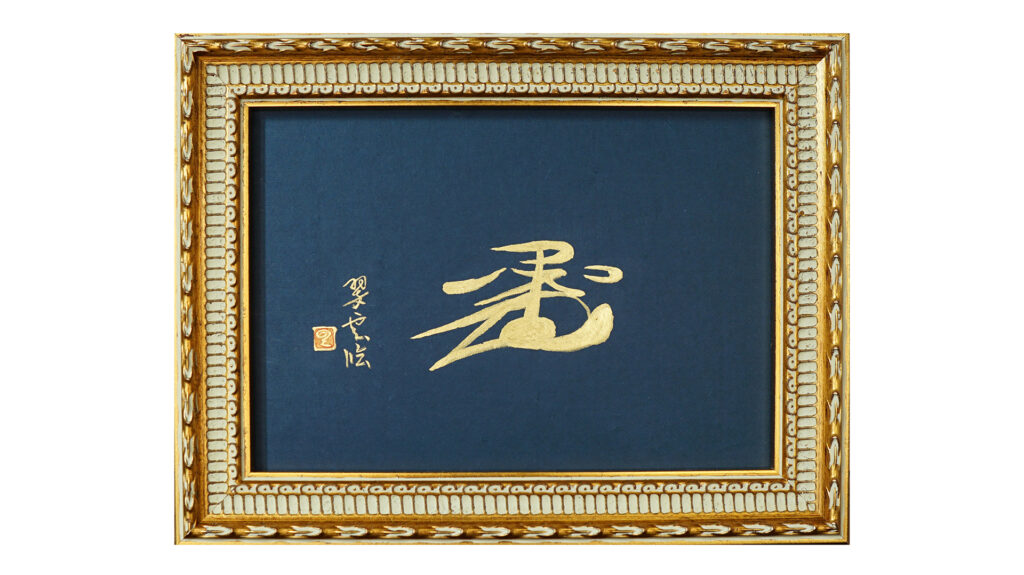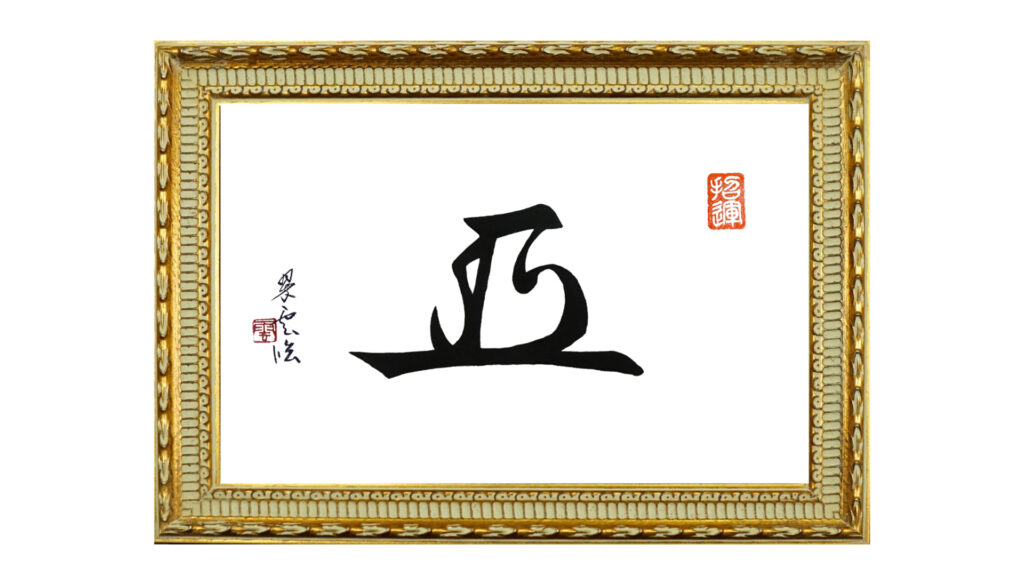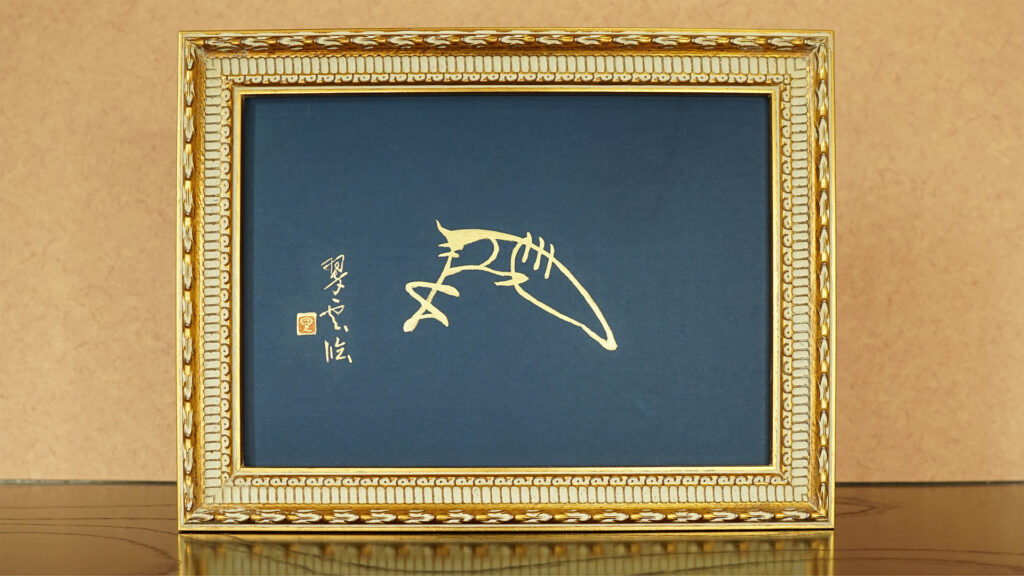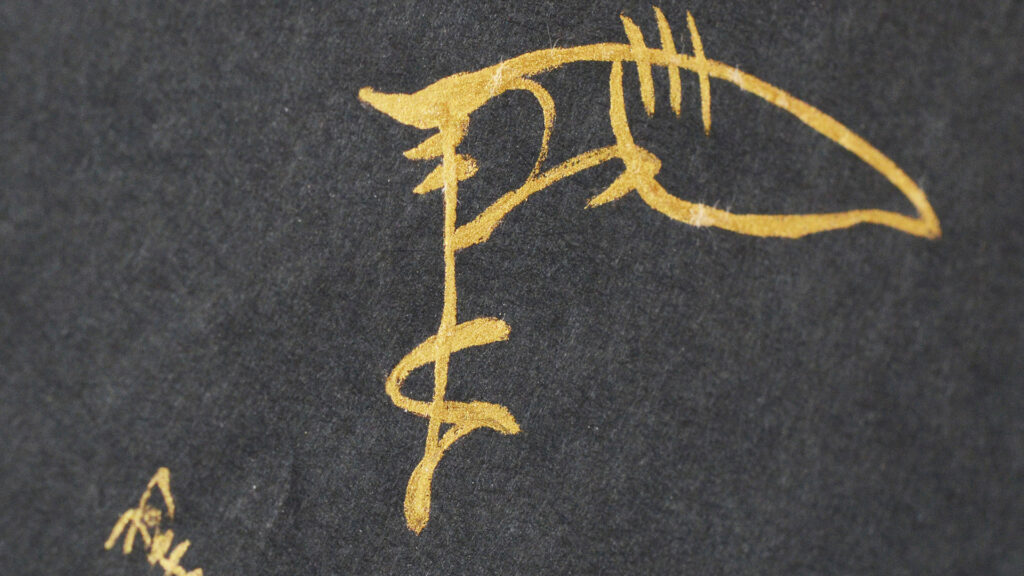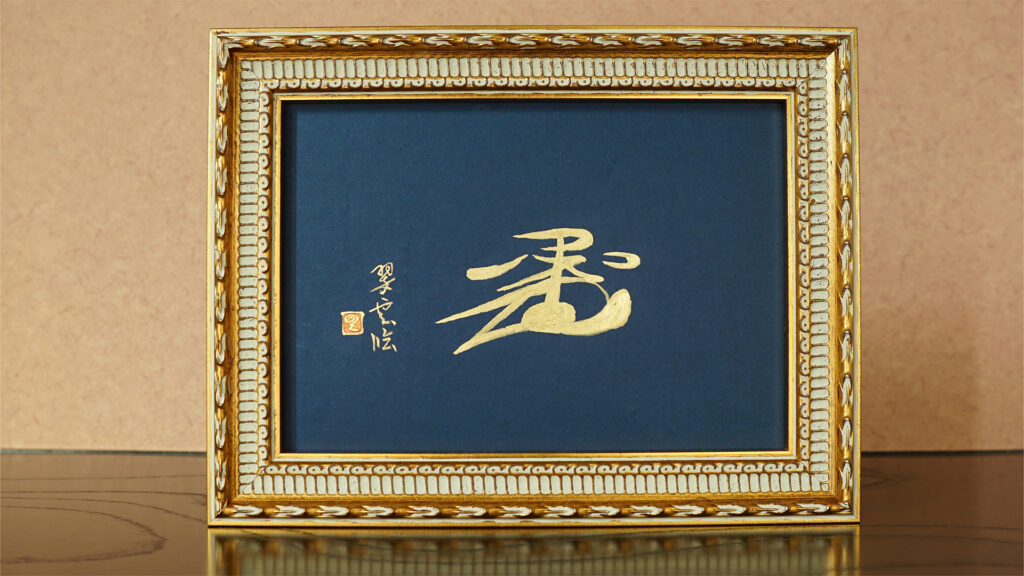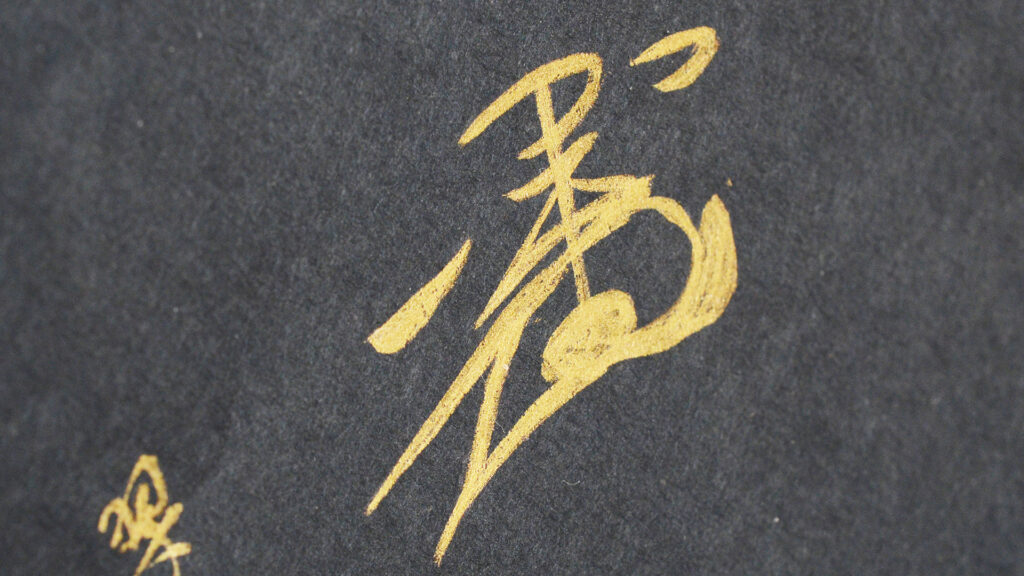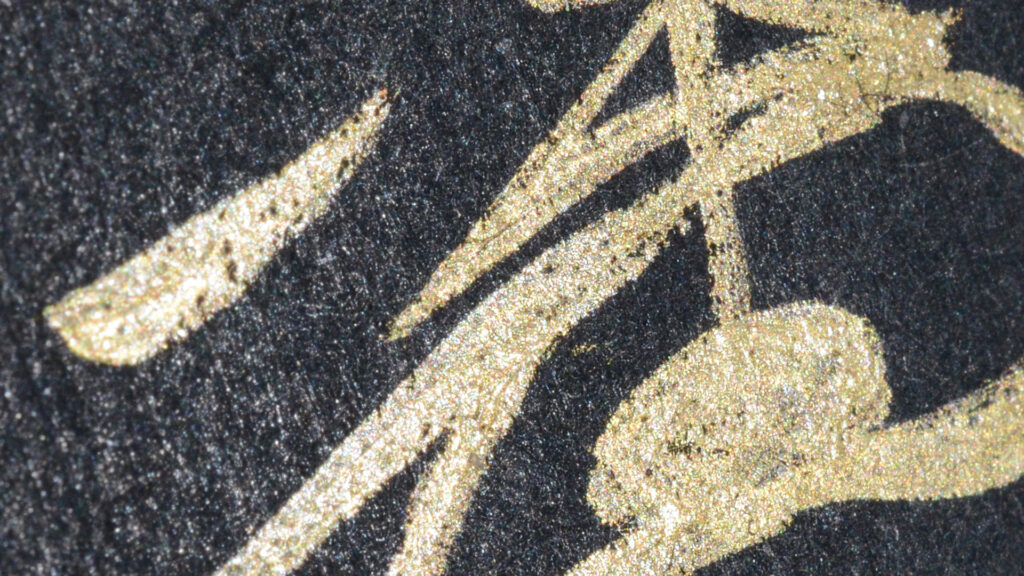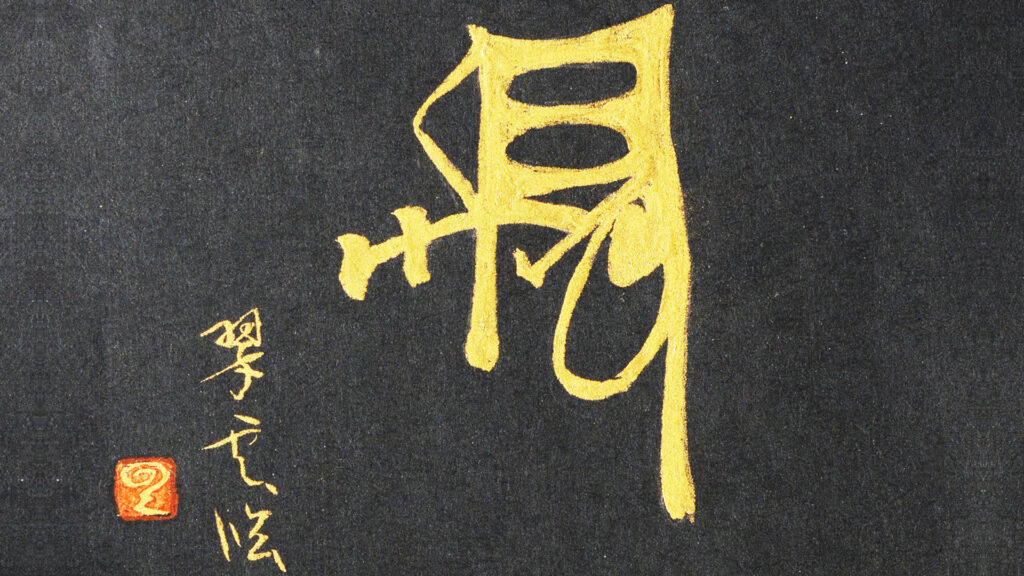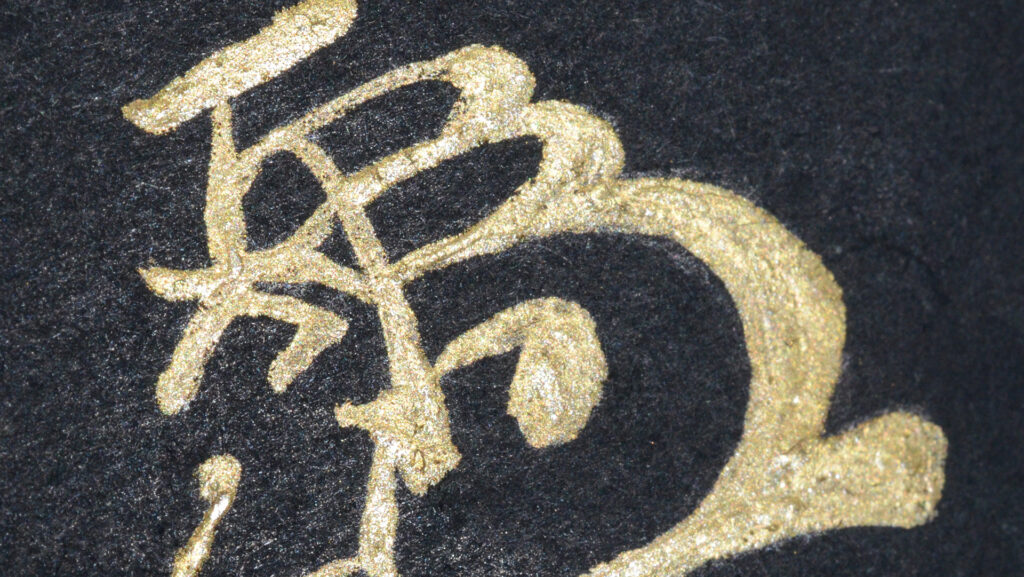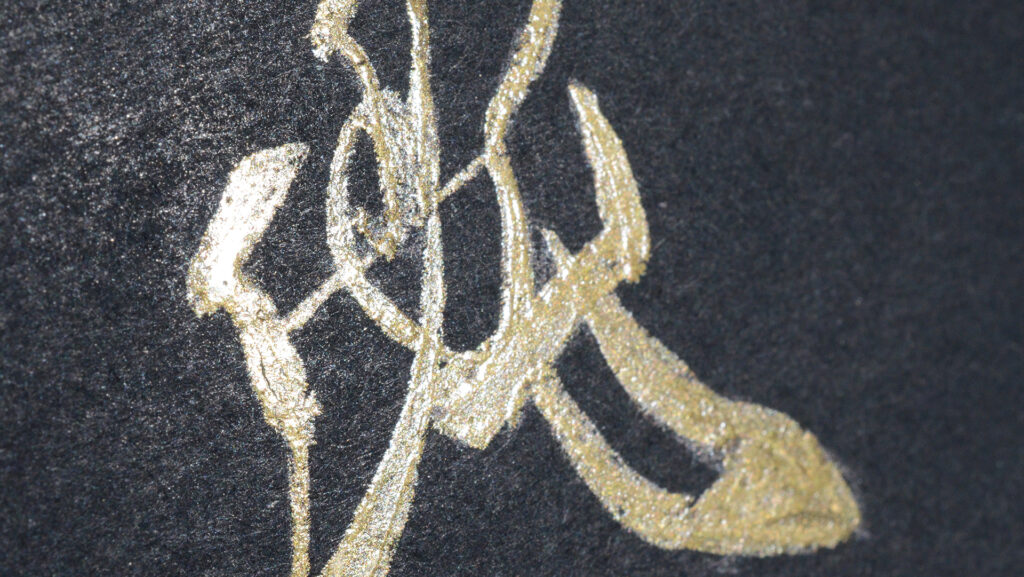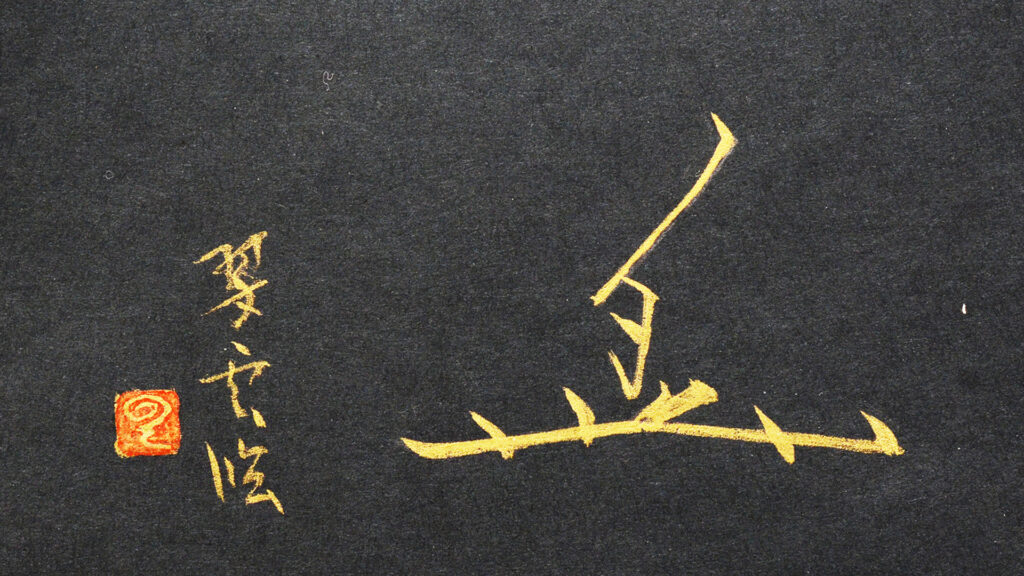
The strong luck
The strongest will
The thickest ties
of the warlords
are placed close at hand.

☆Click on the photo to link to the purchase site ZenMarket
Click on the photo
to link to the purchase site
ZenMarket
We create art works “Kaoh Art” using Kaoh of warlords of the Warring States period as a motif.
It is created by Suiun Arikawa, a calligrapher.
He has the qualification of “unqualified” in Japan.
“Mukansa” means that the quality of the characters produced by the calligrapher, even if he is an expert, will not be criticized or pointed out by others.
Suiun Arikawa has revived Kaoh of the warlords of the Warring States period in the modern age.
Studying the noble aspirations of the warlords, he has injected the “samurai spirit” into each Koh character. Each piece is produced with concentration and care.
No two are alike.
We hope you will feel the spirit of the warlords by using this “Kaoh Art”

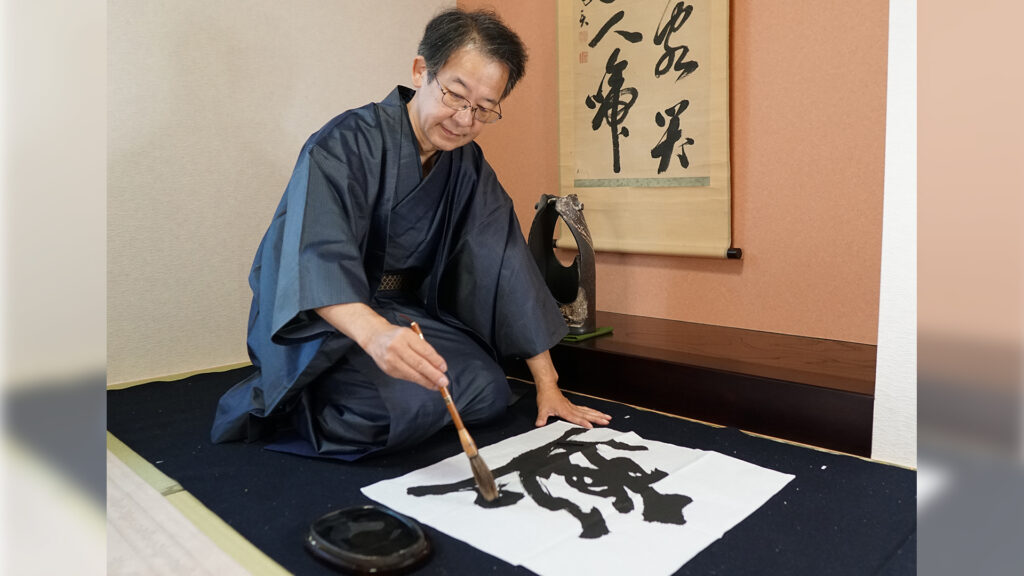
The “Rinsho” as a “signature”
Suiun injects “Bushido
☆☆☆Production method ☆☆☆
〇Pure Gold Works
This is a gorgeous and massive work written in “pure gold”, incorporating the technique of “Konshi-Kinjikyo”, which has been handed down since the Heian period.
Pure gold” (99.99% gold content) is ordered from a specialized store in Kyoto.
After writing, the surface of the “pure gold lettering” is polished with a tool called a “choki”.
In this way, the gold particles are crushed and stretched, and the “golden shine” is increased.
This is a production method that incorporates the wisdom of our ancestors.
Click on photo to enlarge
〇Sumi-ink Works
☆☆☆ Variations of works ☆☆☆
Fan works, framed works, and Photo Framed works are available. (Click to enlarge)
〇Folding fan
Tokugawa Ieyasu, Lord
Available at zenmarket
Toyotomi Hideyoshi, Lord
Available at zenmarket
〇Framed picture
Date Masamune, Lord
Available at zenmarket
Takeda Shingen, Lord
Available at zenmarket
〇Picture frame (with stand)
Toyotomi Hideyoshi, Lord
Available at zenmarket
Tokugawa Ieyasu, Lord
Available at zenmarket


TOKUGAWA IEYASU
Click on photo to enlarge
Tokugawa Ieyasu was a representative samurai of Japan who brought an end to the chaotic Sengoku period and achieved unification of the country.
He established a peaceful era known as the “Edo period,” which lasted for 260 years.
One of Ieyasu’s life philosophies was: “A person’s life is like carrying a heavy burden on a long journey, one should not rush.”
This reflects Ieyasu’s belief that life should not be rushed, but rather built up slowly over time.
He also had a saying: “If one only knows victory and does not know defeat, it will lead to one’s own downfall. ”
This is a lesson that constantly winning without ever experiencing defeat will eventually result in a significant loss.
Ieyasu himself applied these teachings and ultimately secured his victory at the Battle of Sekigahara. The era when Ieyasu flourished was indeed the tumultuous time known as the Sengoku period in Japan.
Navigating through this era, Ieyasu, using his unique strategies, achieved numerous victories.
He transformed from a minor “daimyo” (feudal lord) to the “Seii Taishogun” (Great Barbarian Conquering General) and became a superstar of the Sengoku era through his own efforts.
Tokugawa Ieyasu’s Kaoh, though simple, is grand and dignified. It can truly be described as the Kaoh of a ruler supreme. This style of creating a Kaoh is called “Ming-style”. It incorporates two horizontal lines, a shorter one at the top and a longer one at the bottom, and within this framework, the motif character is designed.
Ieyasu’s Kaoh is believed to be based on the character ” 徳 “, which is a character from his surname.
This distinctive style, termed as “Tokugawa-style”, had a monumental impact on subsequent Kaoh designs.
It’s needless to say that it became the foundational model for the Kaoh of every shogun in the Tokugawa Shogunate.
Even emperors and monks have crafted their Kaoh using this “Tokugawa-style”.
This design influence continues even today, with many ministers adopting the “Tokugawa-style” Kaoh. However, Ieyasu’s Kaoh was not just limited to this design.
Before becoming a major lord, Ieyasu used a different Kaoh.
During the time he was under the protection of the Imagawa clan, he adopted a Kaoh that “emulated” that of Imagawa Yoshimoto, his de facto lord.
One can discern their lord-vassal relationship just by looking at the Kaoh, making it a compelling testament to historical ties.

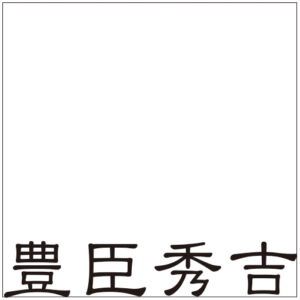
TOYOTOMI HIDEYOSHI
Click on photo to enlarge
Toyotomi Hideyoshi was a military commander of the Warring States period who achieved unification of the country through his skillful control of people’s minds and exceptional political skills.
Hideyoshi was born into a peasant family in Owari Province, but served Oda Nobunaga as his servant and rose to success through numerous feats of valor.
After Nobunaga was defeated by Akechi Mitsuhide in the “Honnoji Incident,” Hideyoshi defeated Mitsuhide in the “Battle of Yamazaki” and succeeded as Nobunaga’s successor in real terms.
Hideyoshi would later obtain the position of “Kanpaku, Grand Minister of State,” and by using the “prestige of the Imperial Court,” he would achieve his long-held dream of unifying the country.
However, in his later years, Hideyoshi lost the brilliance of the first half of his life due to the Korean invasion and succession problems.
Hideyoshi’s last words of resignation were, “”Falling like the dew, vanishing like the dew; such is my life. All that I’ve known in Naniwa, but a dream within a dream.”
Although Hideyoshi had risen to the top of the world, he left this world with the thought, “My life was as fleeting as a dream.
Two years after Hideyoshi’s death, Tokugawa Ieyasu virtually united Japan at the Battle of Sekigahara.
The motif of Toyotomi Hideyoshi’s Kaoh is the character for “悉”.
The character “悉” is said to represent Hideyoshi’s aspiration to “bring peace to all nations.
The character “悉” is derived from the two characters “秀” and “吉” of Hideyoshi using the “hansetsu” method.
In general, Kaoh are designed with all the lines connected.
This is probably because Kaoh were originally designed to be written in a single stroke.
However, Hideyoshi’s Kaoh has “independent lines” on both sides of the top that are not connected to other lines.
This also suggests that Hideyoshi was a man who had free ideas and was not bound by conventional customs.
This is an example of how a Kaoh is said to express a person’s personality. In addition, Hideyoshi seems to have used this design of Kaoh for a long time.
This may be a “brand strategy” by using the same Kaoh for a long period of time.

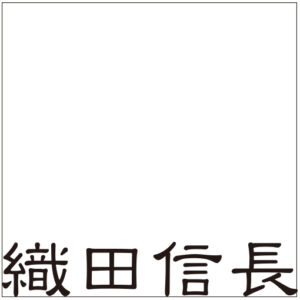
ODA NOBUNAGA
Click on photo to enlarge
Oda Nobunaga, a prominent warlord during Japan’s Warring States period, aimed for national unification, significantly shaping subsequent history.
His innovative policies and unification ambitions were inherited by successors such as Toyotomi Hideyoshi and Tokugawa Ieyasu.
Even after 400 years, Nobunaga’s leadership allure persists, with undying popularity.
Having unified Owari, Nobunaga faced Imagawa Yoshimoto at the Battle of Okehazama.
With Yoshimoto commanding an estimated 25,000 troops against Nobunaga’s 2,000, the odds were visibly skewed.
Yet, amidst heavy rain, Nobunaga’s surprise tactic prevailed, securing a miraculous victory.
This marked the onset of his rapid conquests.
As he neared complete unification, he tragically fell during the Honnō-ji Incident, betrayed by his confidant, Akechi Mitsuhide.
Beyond politics, Nobunaga’s legacy spans foreign policies like the “Nanban trade”, economic strategies such as “Rakuichi-Rakuza”, and cultural influences, notably the tea ceremony.
Oda Nobunaga lived during the Warring States period.
Kaoh was the decisive factor in determining whether a letter was a genuine letter of Nobunaga or not.
This is not the only Kaoh that Nobunaga used.
It is said that Nobunaga changed his Kaoh about ten times during his lifetime.
In fact, it is said that he had no choice but to change them.
Amidst the rampant use of fake letters, Kaoh demonstrated their value as “proof of authenticity.
There are various theories on the interpretation of Nobunaga’s Kaoh, but I would like to introduce two.
The first theory is that the motif was based on the Chinese character for “年” and “長”. The second is that it was inspired by the character for “麟” in the character for “麒麟,” a legendary sacred beast.
The second theory says that it represents Nobunaga’s desire to unify the country.
Nobunaga’s Kaoh is one of the best examples of a Kaoh that “expresses a person’s identity and is the very essence of that person’s humanity.
The essence of Nobunaga’s Kaoh is that “only Nobunaga himself knew about it.
It will be fun for future generations to consider his Kaoh in light of historical facts and Nobunaga’s character.

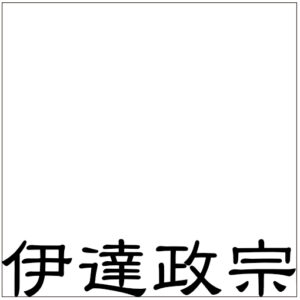
DATE MASAMUNE
Click on photo to enlarge
Date Masamune was a Sengoku warlord who built the prosperity of the Tohoku region as the first lord of the Sendai domain.
Masamune was born into a prestigious family in Oshu, and was an “elite” who received special education in Chinese poetry, waka, and Noh from an early age.
It is said that if he had been born another 10 or 20 years earlier, Masamune might have become a “Tenkabito”.
Even though he lived in an era that was gradually moving toward peace after the turbulent era of the Sengoku period, he continued to have the ambition to “take over the world” until the latter half of his life.
Although he was suspected by Toyotomi Hideyoshi and Tokugawa Ieyasu at various times as a “dangerous man aiming to take over the country”, his intelligence gathering ability and decisiveness helped him survive the Sengoku period. During the Edo period, when there were no wars, he devoted his efforts to the development of the Sendai domain, and poured his passion into making Sendai a “capital” comparable to Edo and Osaka.
Masamune sent missions to “Mexico, Spain, and Rome” to negotiate trade between the Sendai Domain and Spain, and was a military commander with great foresight who looked not only at home but also around the world.
Generally, the Kaoh is written independently under the “name,” but in Masamune’s Kaoh, the “宗” line and the Kaoh line are integrated and cannot be distinguished.
Masamune’s Kaoh is said to be in the shape of a bird called “sekirei” (wagtails) and it is more of a design than a signature, and the character motif is unknown.
Masamune was suspected by Toyotomi Hideyoshi, the ruler of the time, of inciting rebellion.
Hideyoshi had obtained a letter from Masamune as evidence.
When Hideyoshi called Masamune and asked him about the authenticity of the letter, Masamune looked at it and said, “This is a fake.
Masamune explained, Kaoh on the letter I wrote intentionally made holes in the eyes of “sekirei” . with a needle, but Kaoh on this letter does not have such holes.
When a surprised Hideyoshi checked Kaoh on the letters received so far from Masamune, he found that there were indeed needle holes in the eyes of “sekirei” .
This relieved Masamune of his suspicion and saved his life.


TAKEDA SHINGEN
Click on photo to enlarge
Takeda Shingen was a feudal lord known as the “Tiger of Kai,” and the Takeda forces he led were said to be the strongest at the time, so strong that even Oda Nobunaga feared them.
It is said that the history of Japan might have been different if Shingen, who was aiming for the top of the country, had not fallen ill before his invasion of Kyoto.
Shingen’s strategy was to gather information.
It is known that he had “ninjas” working as intelligence agents, and it is said that he was aware of the whole of Japan even though he was in Kai.
The military banner of “Fu-Rin-Kazan” is also well known.
The military banner has 14 Chinese characters on it, which are taken from Sun Tzu, a book on the Art of War.
The phrase “fast as the wind, quiet as the forest, aggressive as the fire, and unmoving as the mountain” is a good description of Shingen’s strategy.
Although Shingen never succeeded in conquering the country, he was adored by his vassals and fiefdom, and he is still loved by the people of Kai (Yamanashi Prefecture) as a hero of his hometown.
Takeda Shingen‘s name was “Harunobu”.
“Shingen” was his legal name.
Shingen’s Kaoh is based on the motif of ” 晴 ,” one of the letters of his name.
It is said that the design breaks down ” 晴 ” into ” 日 ” ,” 生 “,and ” 月 “.
However, it is not possible to determine which part expresses them.
Originally, Kaoh was written in a single stroke, and was created so that it could be identified as belonging to a specific individual.
Generally, there is a “stroke order” in Kaoh, which is useful for understanding how it was written.
However, Shingen’s Kaoh are thought to have been shaped by taking the outline of the line and painting the inside with ink, rather than “drawing lines”.
This type of Kaoh is seen not only in Shingen but also in other Sengoku warlords.
This trend seems to have led to the disappearance of the difference between Kaoh and seal in the Edo period.


UESUGI KENSHIN
Click on photo to enlarge
Uesugi Kenshin is known as the “Dragon of Echigo” and is said to be the strongest military commander of the Sengoku period.
Kenshin was born into the Nagao family in Echigo Province, and his childhood name was “Torachiyo”.
From an early age, he was entrusted to a temple called Rinsen-ji, where he learned academics and military tactics. His training at this temple fostered his faith in Buddhism and Bishamonten, and laid the foundation for him to become a rare figure known as a “warlord of righteousness” during the Sengoku period.
Kenshin later inherited the headship of the Yamauchi Uesugi family and Kanto Kanrei position, and took the name “Uesugi”. Many people may be familiar with the proverb,”Send salt to the enemy”, which is an episode in which Kenshin was called the “warlord of righteousness”.
This is an episode in which Kenshin is said to have sent salt to Shingen instead of participating in the sanction to stop the export of salt to Takeda Shingen in Kai, which had no sea.
Nowadays, it is used as a proverb that means “not to take advantage of the enemy’s weakness, but instead to save him from his predicament. ”
Although Kenshin was said to be the strongest man in the Sengoku period, he was a “warlord of righteousness” who did not aim to become a “lord of the nation” and create a new order.
It is unclear what “characters” Uesugi Kenshin used as motifs for his Kaoh.
Kenshin used Kaoh designs for a long time without major changes.
The general shape of Kenshin’s Kaoh is triangular, with a long horizontal line at the bottom for stability.
The design on the right side, which looks like a superimposed “B” of the alphabet, also evokes the image of the “suehirogari” (endless expanse) favored in Japan.
Another characteristic of Kenshin’s Kaoh is that it looks more like a “seal” stamp than a “handwritten signature”.
The website of the “Uesugi Museum of Yonezawa City,” which houses historical materials related to the Uesugi family, introduces the “Kaoh seal” as being stamped on documents.
At an exhibition held at the museum in 2003, Kenshin’s Kaoh seal (an important cultural property) was displayed.
This reveals that Kaoh were not only “handwritten.


AKECHI MITSUHIDE
Click on photo to enlarge
Akechi Mitsuhide was a Sengoku period military commander who earned the tremendous trust of Oda Nobunaga and rose to become a daimyo.
Mitsuhide excelled not only in military prowess but also in culture, and was admired by his people.
Mitsuhide was highly valued by Nobunaga, and even though Mitsuhide himself swore loyalty to Nobunaga, he forced Nobunaga to commit suicide in the “Honnoji Incident”.
There are various theories as to why Mitsuhide rebelled, and the “Honnoji Incident” is said to be the greatest mystery of the Sengoku period.
After the “Honnoji Incident,” Mitsuhide captured Nobunaga’s stronghold “Azuchi Castle,” but Mitsuhide was unable to win over the surrounding daimyo to his side.
At this time, Nobunaga’s powerful subordinates were advancing to various places, and Mitsuhide believed that they would not be able to turn back so easily.
However, Toyotomi Hideyoshi, who was supposed to be confronting the Mori clan in the Chugoku region, suddenly returned to Kyoto, and 11 days after the “Honnoji Incident”, Mitsuhide suffered a crushing defeat at the Battle of Yamazaki.
Mitsuhide fell during the rout and was hunted by warriors, and met a tragic end as a traitor to his master.
How great was Mitsuhide’s regret?
Akechi Mitsuhide ‘s Kaoh design is more aristocratic than warlord style.
The warlord-style Kaoh often expresses “strength” in a straight line and a thick line.
On the other hand, the aristocratic style of Kaoh often expresses “grace” with curved and thin lines.
Mitsuhide also interacted with Kyoto’s cultural people, and it is thought that he incorporated his identity as a cultural person as well as a warlord into the design of Kaoh.
Mitsuhide’s Kaoh is based on four characters: “力,” “仇,” “糺,” and “代,” and it is said that Mitsuhide’s wish for the revival of the Toki clan, the birthplace of Mitsuhide.
It is believed that Mitsuhide incorporated his identity as a warlord into the Kaoh by the “character” which is the motif of Kaoh.
Mitsuhide’s Kaoh has a deep culture, a high ambition, and a sophisticated sense of beauty.
The fusion of samurai identity and cultural identity can be said to be a Kaoh that beautifully represents “Human Mitsuhide.”

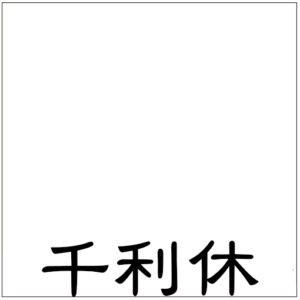
SEN NO RIKYU
Click on photo to enlarge
Sen no Rikyu was a tea master during the Warring States period who pursued and perfected a style of tea ceremony called “Wabicha” that minimized waste, and is known as the “Tea Saint”.
At that time, Sakai was an international city thriving on trade and a center of culture comparable to the capital of Kyoto, and many of its merchants were also outstanding cultural figures.
As Sakai came under the direct control of Nobunaga Oda, Rikyu served Nobunaga as a sado (chanoyu master).
Later, Rikyu served Toyotomi Hideyoshi as a tea master, and was instrumental in organizing the “Imperial Tea Ceremony” and “Kitano Grand Tea Ceremony,” where Hideyoshi offered tea to Emperor Ogimachi, and was called “the best tea master under heaven.
However, the honeymoon with Hideyoshi did not last long, and Rikyu incurred Hideyoshi’s anger and was ordered to commit “seppuku”.
With this, Rikyu could be said to have ended his life as a samurai rather than a townsman.
Rikyu’s “Wabicha” has been passed down to his descendants as the “Senke Tea Ceremony”and is still enjoyed by many people around the world.
Sen no Rikyu’s Kaoh have a unique and elegant design.
Rikyu used multiple Kaoh, and this Kaoh is said to have been used in his later years.
Although the horizontal line at the bottom is thin, it is curved slightly upwards to create a very stable design.
It is a beautiful Kaoh that is full of intelligence, education, and aesthetic sense as one of Japan’s leading cultural figures.
Rikyu, who was known as “the best tea master in the world”, was also an expert on tea utensils, and his aesthetic sense was highly trusted.
Rikyu also designed the tea room, designed and produced tea utensils, and was the person who produced the entire tea ceremony.
Rikyu, unlike previous tea masters, wrote Kaoh on various tea utensils.
This had a great influence on his disciples and subsequent generations of tea masters, and Kaoh is still cherished in the Senke tea ceremony.
